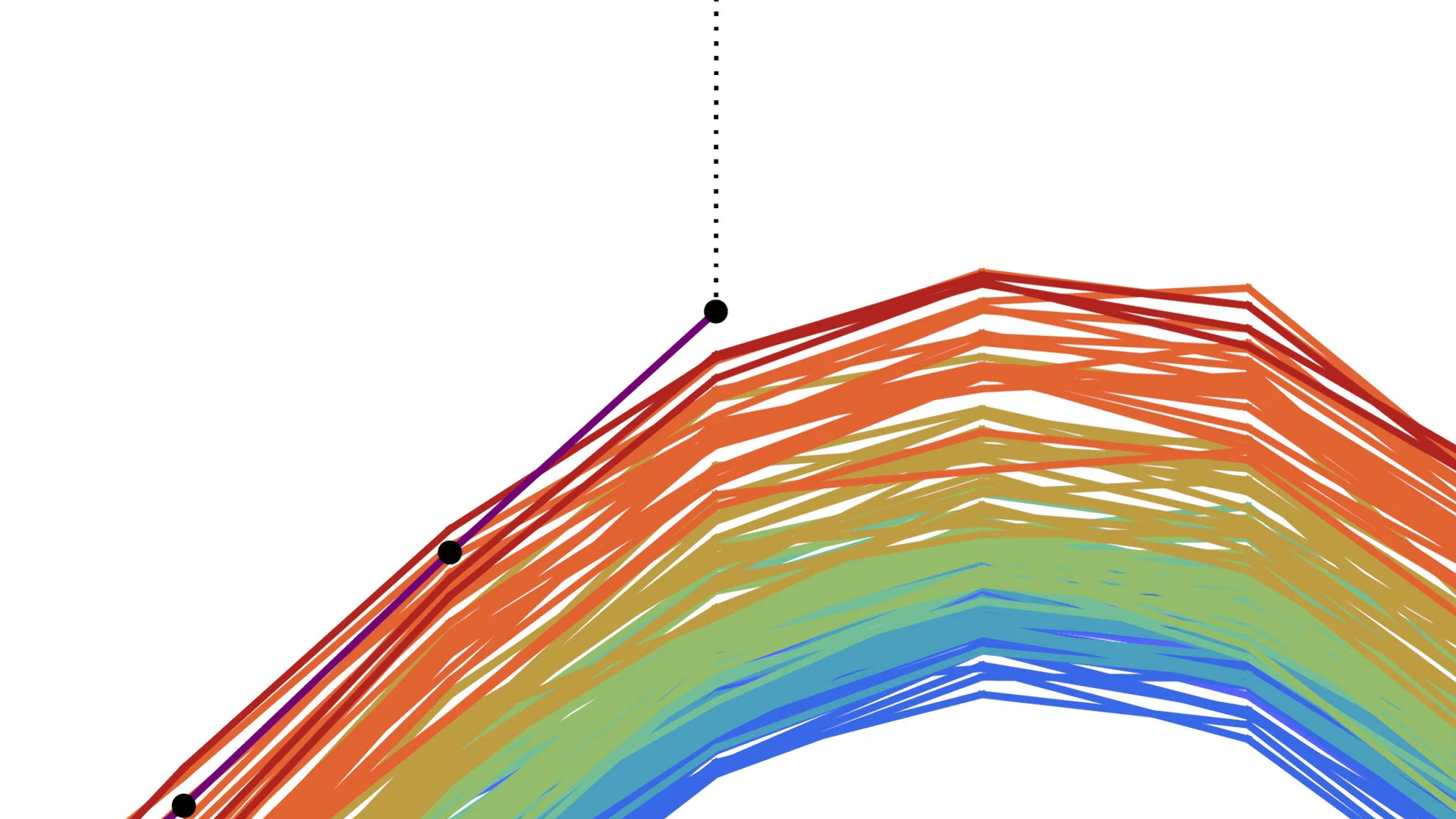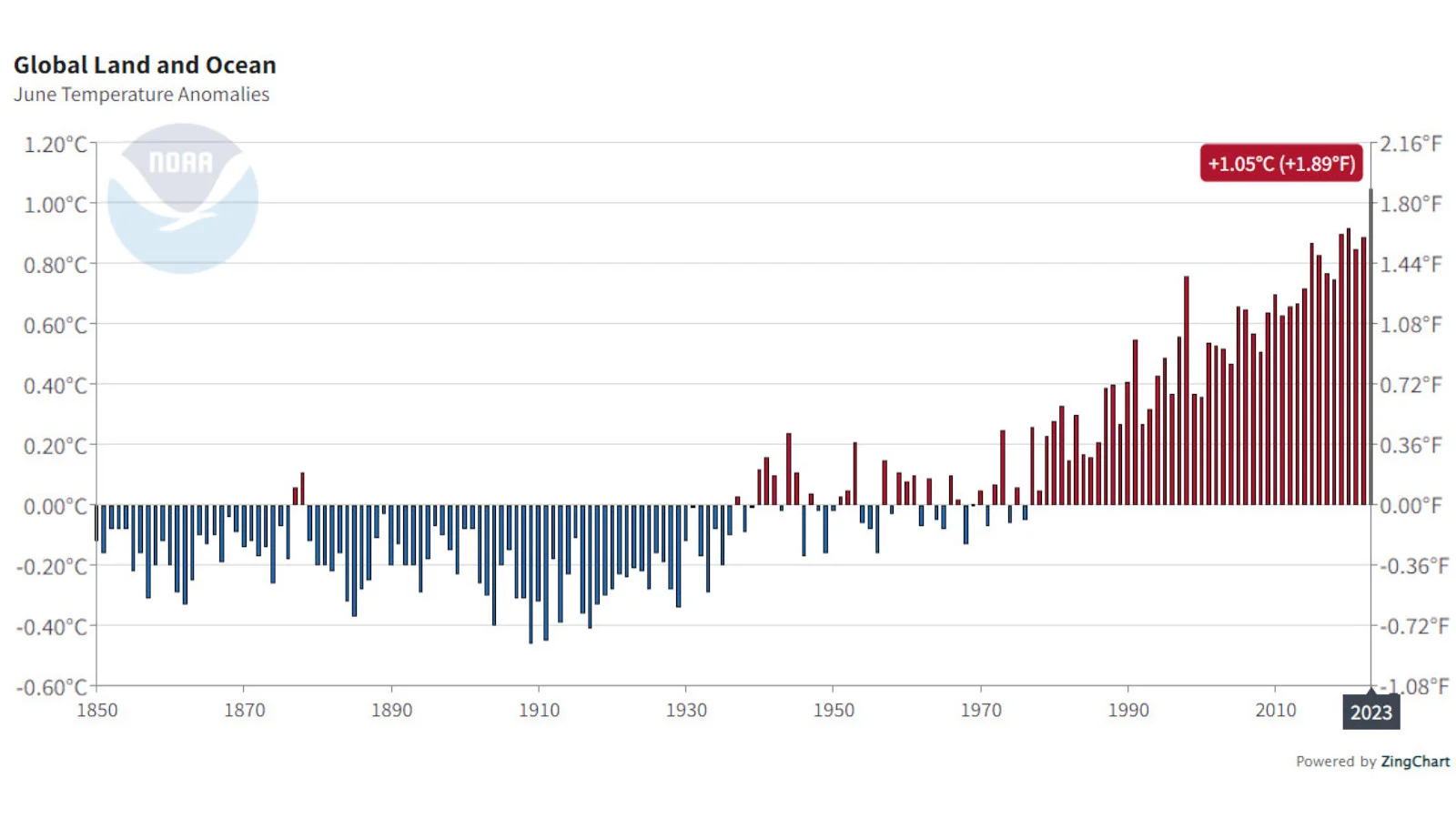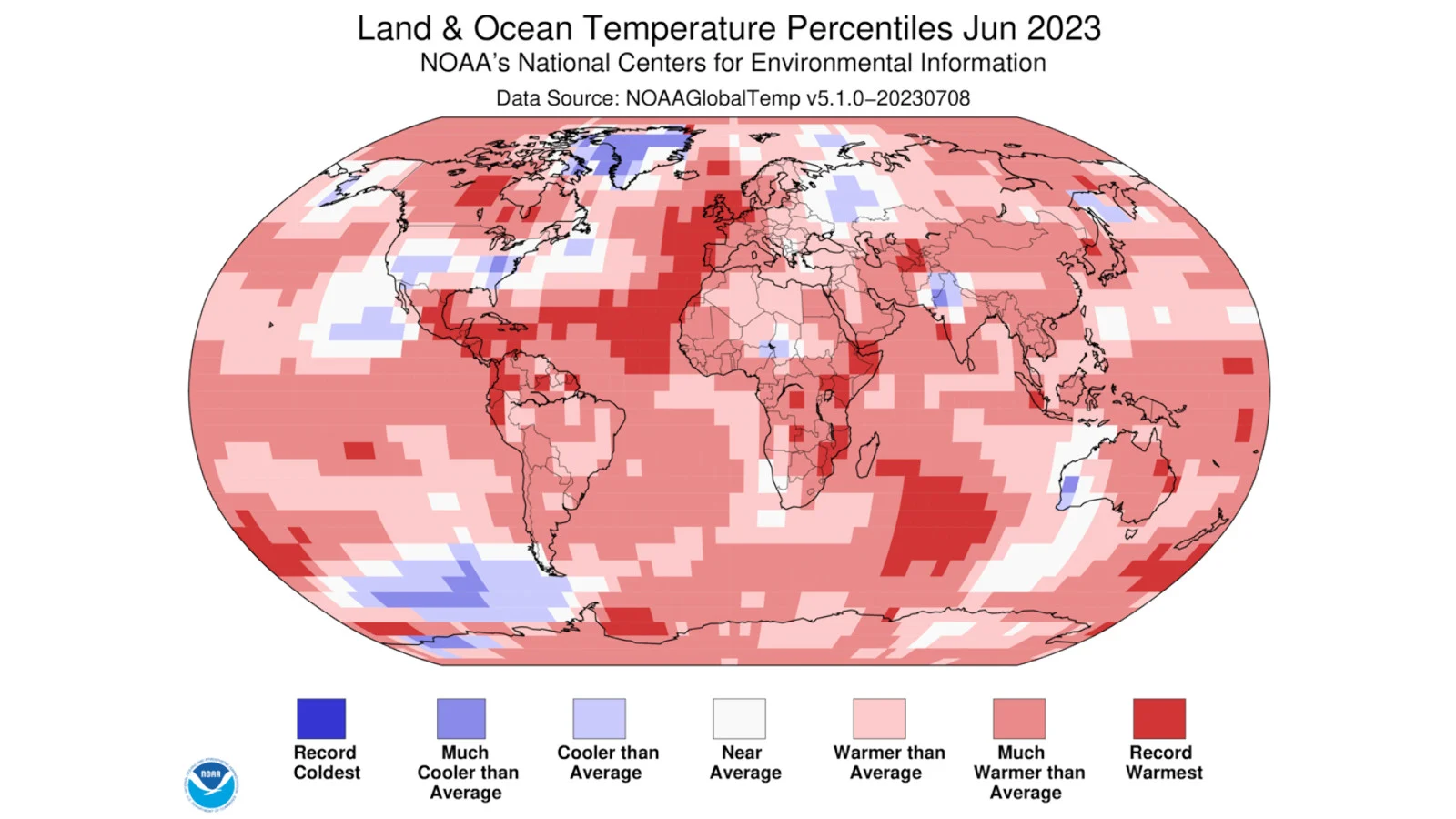
2023 now in the running for hottest year after record-shattering June
The world is heating up so quickly in 2023 that experts are making unprecedented early predictions that the year will become one of the hottest ever on record.
Last month shattered all previous global temperature records, becoming — by far — the hottest June of at least the past 174 years. Now, experts are speculating that this extreme heat may have locked in 2023 as the next hottest year on record.
The leading climate agencies around the world all agree. NASA, NOAA, the Japanese Meteorological Agency, the EU’s Copernicus Climate Change Service, and Berkeley Earth have each, independently, ranked June 2023 as the hottest month of June since the start of the industrial revolution.

A time-series graph plots the temperature anomaly from every month of June from 1850 to 2023, as compared to the average temperature from all months of June during the 20th century, with June 2023 ranking as the hottest month of June in that time, at +1.05°C above the average. (NOAA NCEI)
According to NOAA’s records, this is the 47th consecutive year that the global average temperature for June exceeded the 20th century average. Also, global monthly temperatures have tracked higher than the 20th century average for the past 532 consecutive months (since February 1979).
“This marked the first time a June temperature exceeded 1°C above the long-term average,” NOAA stated in their report.

NASA’s GISTEMP Seasonal Cycle graph plots each month’s temperature anomaly (compared to the same month’s temperatures averaged from 1980-2015) to show how global temperatures track with the world’s overall seasonal cycle. June 2023 stands out from the rest as the hottest June in their records. (NASA GISS)
READ MORE: Earth, Canada's North shatter temperature records as heat skyrockets
The remarkable heat experienced around the world is evident in the latest temperature maps produced by NOAA’s National Centers for Environmental Information (NCEI).

This map shows the relative warmth of the planet compared to the latest 30-year average temperatures (1991-2020) for the month of June 2023. (NOAA NCEI)
As shown above, while there is some variation, most of the world experienced at least “Much Warmer than Average” temperatures in June. Meanwhile, record heat was seen in many regions, including parts of northern Canada, the North Atlantic Ocean, a swath stretching from Mexico through Central America to Ecuador, Colombia, Venezuela, and Guyana, as well as parts of southern and eastern Africa. Even coastal regions of Antarctica saw this same record-breaking heat.
DEEP DIVE: How have emissions contributed to the current heat records?
What does this mean for 2023?
As of June, with half the year’s temperatures tallied up, NOAA ranks 2023’s year-to-date as the third warmest January-to-June period in their record books.

This “horse race” graph plots the year-to-date global temperature for each month for the top 10 hottest years (coloured lines), plus 2023 (black line). Although this year started off cooler due to La Niña, the strengthening El Niño pattern combined with the impacts of greenhouse gas emissions is driving temperatures up, putting 2023 in 3rd place as of June. (NOAA NCEI)
According to the agency’s outlook for the end of the year, 2023 is nearly certain to end up in the top five hottest years, with roughly a 68 per cent chance of ending up in the top three. Based on their current forecast, there is just over a 20 per cent chance of 2023 becoming the hottest year on record.
Gavin Schmidt, climate scientist and Director of NASA’s Goddard Institute for Space Studies, agrees with NOAA’s basic assessment, but added “if we factor in the incipient El Niño event, the odds increase to ~50% for a record year.”
However, using their own approach to forecast the final outcome for this year, Berkeley Earth’s analysis resulted in a much stronger likelihood of 2023 breaking all previous yearly records.
“2023 is on pace to be the warmest year yet observed since instrumental measurements began,” Robert Rohde, the lead scientist at Berkeley Earth, wrote in his latest global temperature update.

Annual global temperatures (blue) from 1850-2022 are plotted here, along with the year-to-date average for 2023 (red dot + bar), and the statistical likelihood of the outcome of 2023 (green bar). The baseline for the anomalies is the 50-year average of annual global temperature from 1850-1900 (“preindustrial times”). (Berkeley Earth)
“The surprisingly strong warming in June 2023, combined with the likelihood of a strong El Niño event, have increased the forecast for the rest of 2023. The statistical approach that we use, looking at conditions in recent months, now believes that 2023 is likely to become the warmest year on record (81% chance),” Rohde explained.
This represents an unprecedented level of certainty for a forecast made with half the year still left to go.
Back in 2015, Berkeley Earth had forecast an 85 per cent chance that the year would become the next hottest on record. It turned out they were right, and 2015 did become the hottest year on record at the time. However, their forecast wasn’t posted in July, but October, with three-quarters of the year already tallied up.
“Prior to June, we had placed the odds of a 2023 record annual-average at 54%,” Rohde posted on Twitter. “But the warmth in June, and the short-term boost that comes from a strengthening of El Niño, have increased the odds of a 2023 record.”











